Manjusha Painting: An Ancient Art That Cannot Be Brushed Aside
For centuries, the spiritual land of Bihar has nurtured plenty of heritage art forms that reflect the rich ancient Indian civilization, diverse culture, and regional folktales. In the blessed hands of artisans in Bihar lies the timeline of the evolution of the arts.
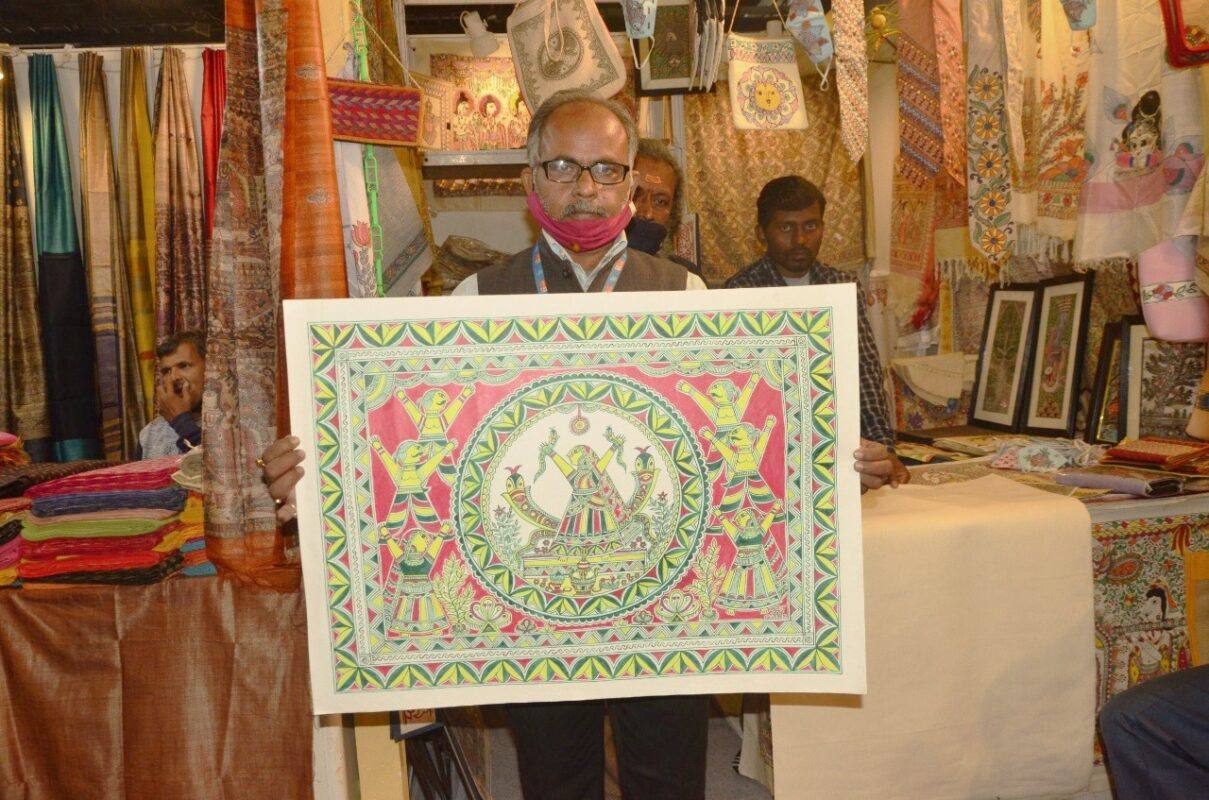
Besides the well-acclaimed international fame of Mithila Painting, there is one more art form that finds its way out of oblivion and comes to the fore while trying to stand as an equivalent to the former.
Manjusha art is an ancient folk art of the Anga (Ang) region of Bihar. Ang is the ancient name for Bhagalpur, the silk city of Bihar. This art form has been prevalent in the Bhagalpur district and on the shores of the Champa River for a long period of time. Manjusha art is a series of larger pictorial reflections of the folklore of Bihula-Vishahri and deity Mansha folktales and depicts a larger cultural consciousness.
However, it is important to understand the narrative associated with this folk art before delving into its specifics. The Kumbhakar caste and the Malakar caste were the only two families to practise this art. The pots on which the Manjusha art is painted and revered during the festival were once made by the Kumbhakar caste.
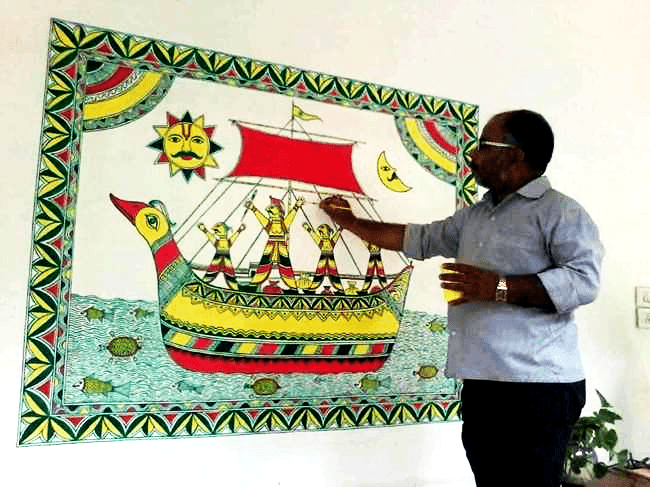
The story involves Bishahari, or Mansa, the snake goddess, as well as Bihula, who protected her husband from the deity’s anger and a snake bite. This story used to be told in the past. Although oral songs are less common now, efforts are being made to bring them back. The story that serves as the inspiration for and is represented in Manjusha Art is the first narrative folk art of the region.
WG Archer’s Contribution
This ART came to the fore between the years 1931 and 1948 AD. During this period, WG Archer, an ICS officer, and his wife began to study the Manjusha art. Archer realised the potential of the Manjusha art form and put together a collection following an exhibition at The India Office Library, London, UK.
The exhibit became a part of the ‘Archer Collection’. During this period, Manjusha art gained international recognition. But at that time, the artisans could not prosper due to the oppressive regime of the British. Later in this period, Manjusha art seemed to be fading into the background and going into oblivion. Slowly, this ancient art form came to the verge of extinction. But time and fate had some other plans for Manjusha’s art.
The Revival of Manjusha Art and the Role of Manoj Pandit
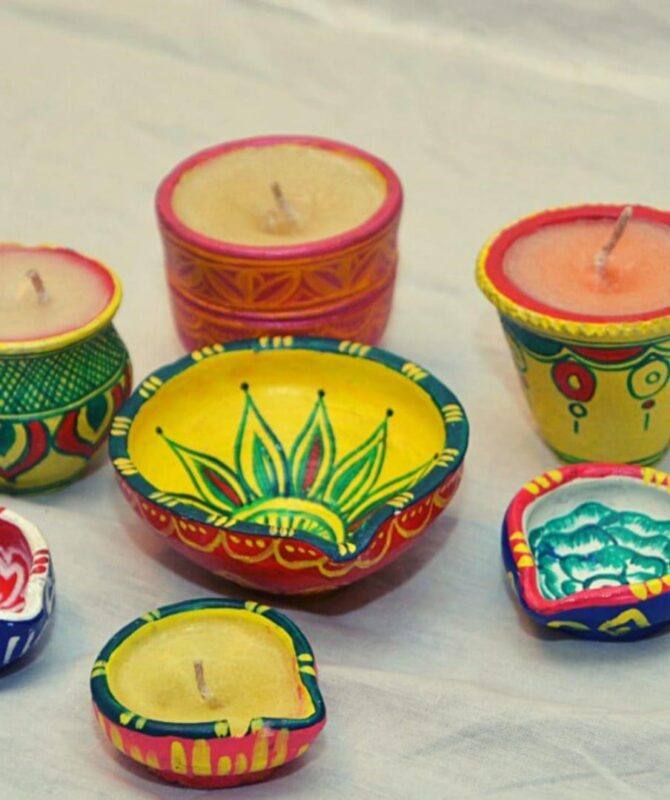
Manoj Kumar Pandit, known as Manjusha Guru in the Bhagalpur district, is transforming the ancient Manjusha art of Ang Pradesh while creating a realm equivalent to the well-known Mithila Paintings. With his consistent efforts, Manjusha blossomed as one of the most unique and influential arts in Bihar. But his journey since childhood to the moniker ‘Manjusha Guru’ encapsulates his early struggles and outlines a courageous path that very few wish to pursue.

Born on January 13, 1975, at Mohaddinagar, Mirjaanghat (Bhagalpur), Manoj Pandit has been practising Manjusha art since childhood, along with his mother Nirmala Devi, a traditional Manjusha artist who used to draw Manjusha on plates and other utilitarian items. Nirmala Devi’s family was affluent but went through a serious financial crisis with the deteriorating health of her husband (Narayan Pandit) and her father-in-law. To earn a livelihood, Nirmala Devi started painting home utensils. Following in her footsteps, Manoj picked up this art form at the age of eight and started doing Manjusha’s myth of the elephant, scorpion, snake, boat, and other religious mythical characters. Manoj, with the help of pink, red, and green flowers, used to paint Manjusha boxes (Pitari) on weddings and during the Vishahri offerings. It is to be noted that only three colours—pink, red, and green—are used in Manjusha.
The Question of Survival
Seeing her son as a child prodigy, mother Nirmala Devi, following the forecast of an astrologer and on the appeal of Dr. Tribhuvan Poddar (a Zoology Dpt. professor at Bhagalpur University), sent Manoj to Chakravarti Devi, an established and most reputed name in the field of Manjusha art. Under her guidance, Manoj learned the nitty-gritty of Manjusha art. During her last days, Chakravarti Devi reportedly said, “Lagta hai meri maut ke saath Manjusha kala bhi khatm ho jaayegi (It seems Manjusha will also die with my death.)
Art can survive when it creates survival opportunities. Making it difficult to earn a livelihood in those days, artist Nirmala Devi had to sell her jewellery. But fate had smiled upon Manjusha’s art.
After earning a Master’s Degree in Fine Arts from Chandigarh, Manoj went to Delhi in search of employment. And then he went to Mumbai to try his hands at acting, but his love and passion for Manjusha couldn’t hold him much longer in the illusion of Mayanagri. He returned to his homeland and started doing Manjusha, painting the mud walls of his home. Carrying a bag filled with brushes, paints, and twigs on his shoulder, Manoj used to travel to remote areas of Bhagalpur to paint the local mythological characters like snakes, scorpions, and boats. People made fun of his art campaign and termed him ‘insane’. Nevertheless, Manoj’s grit and determination never let him deviate from his path. He was resolute.
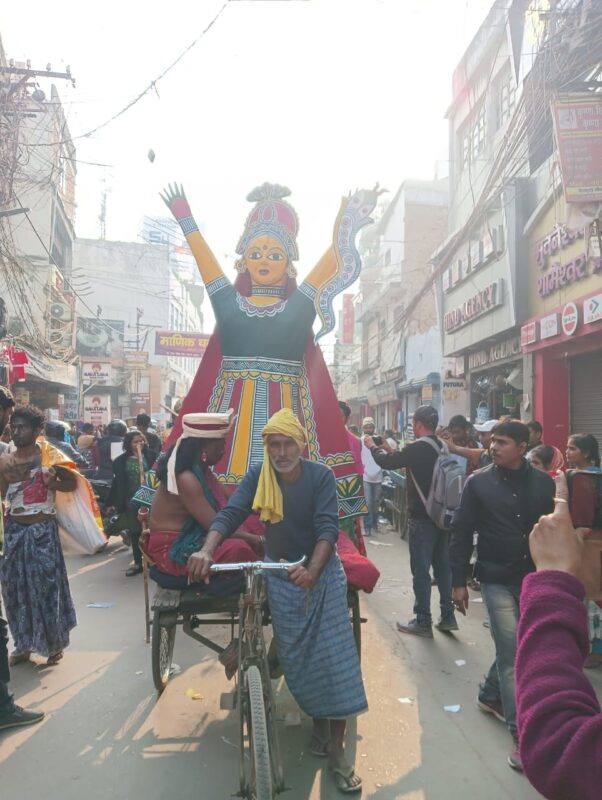
In 1993, he initiated the Manjusha Vikas Yatra’. Two years later, he incepted ‘Kala Sagar”, a cultural foundation in Bhagalpur, in 1995. Soon, he became a mentor for many budding artists in the state. He started doing Manjusha art paintings on silk sarees, statues, canvas, and other utilitarian items. People again tried to bog him down for failing to generate economic sustainability for his family and ridicule him for his creativity.
2005, the ‘giant leap’ year
With the support of the state government, Manoj Pandit began mid-scale Manjusha workshops in different parts of Bihar. People started believing in him. He became an inspiration for budding artists. They started visiting him to take Manjusha lessons. The same year, ‘Manjusha Mahotsav’ was organised in Bhagalpur. His father, Narayan Pandit, coined the slogan ‘Save Culture, Save Art’. People started recognising him as a master of Manjusha.
By the end of 2006, Manoj Pandit had become an established name in the corridors of art, especially among Manjusha artists. He gained more prestige after he presented a Manjusha painting to the Chief Minister of Bihar, Nitish Kumar, in 2006. Gradually, Manjusha flourished nationally. Lalit Kala Academy and Upendra Maharathi Shilp Anusandhan Sansthan (UMSAS) supported Manoj Pandit in his journey. The former Director of UMSAS, Ashok Kumar Sinha, has also written about him in his book, ‘Bihar Ke Kaljayee Shilpkar’.
Bihar Bhawan Art Campaign Gives Impetus to the Economic Sustainability of Artisans
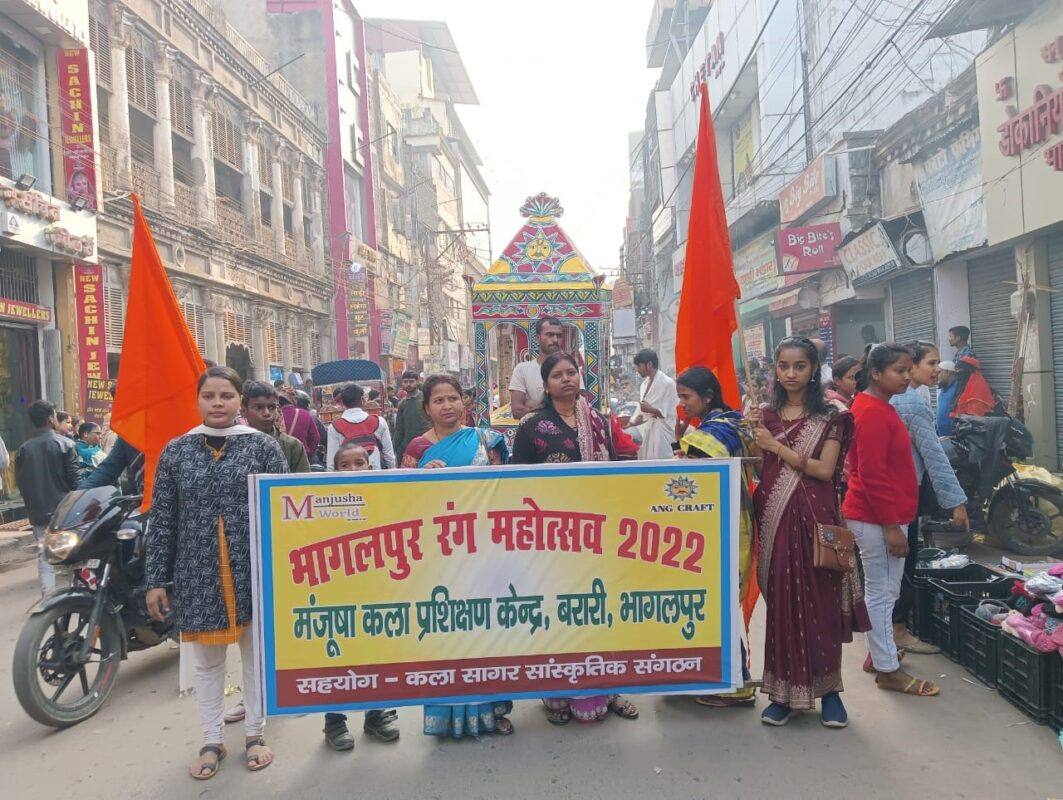
India was gradually moving towards normalcy after the first wave of the pandemic. Palka Sahni, Resident Commissioner, Bihar Bhawan, spearheaded an art campaign for the pandemic-hit artisans of Bihar and provided them with economic sustainability. Catalogues were made. Hundreds of artists were contacted. Zoom meetings, WebEx, and other digital mediums were used to bring everyone together. A database was created. With the help of all the information, she incepted an art kiosk, ‘Biharika, Bihar Ki Kala Dehri, at Bihar Niwas, Chanakyapuri, New Delhi, that aims to bring thought-provoking installation art and the finest handicrafts and handlooms from different art clusters of Bihar to the national capital.
Taking Manjusha to a new horizon, she invited Manjusha artists from Bhagalpur to paint the walls of Biharika into a new Manjusha layout featuring Bihula-Vishahri. Artists Pawan Sagar and Aman Sagar painted the wall of Biharika.
Bihar Bhawan produced a wide range of Manjusha artists’ digital catalogues, comprising the bios of the artisans and the items made by them. Manjusha paintings done on terracotta, wood, silk, and steel are now the cynosure of Biharika’s shelves. The office of the Resident Commissioner regularly features distinct stories related to Manjusha art. Besides Manoj Pandit, other Manjusha artists also get similar opportunities at Biharika to promote their products. At times, the Vikramshila Express train is used to ferry Manjusha items sent by Manoj Pandit from Bhagalpur to Bihar Bhawan. Those procured artefacts are sent to the Bihari diaspora, administrative officers, and journalists on various festivals and religious occasions under the art amplification campaign of Bihar Bhawan, New Delhi.
Manjusha, from Bhagalpur to Delhi
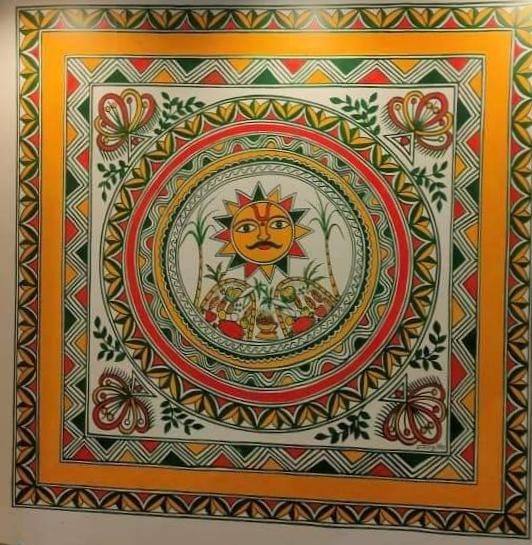
Manjusha Guru and his team travel every year to New Delhi to participate in the prestigious Trade Fair organised by the ITPO. The Bihar Pavilion at the India International Trade Fair won a gold medal in 2021 for its outstanding performance. This year, the Bihar Pavilion’s entry and exit gates were decorated with Manjusha art. Pawan Sagar and Aman Sagar spent six nights to complete it. Manoj also got to represent Bihar at Rajpath (now Kartavya Path) as he exhibited a 324 sq. ft. long Manjusha painting on the eve of Republic Day. The freedom struggle of freedom fighters like Tilka Manjhi, Anand Mohan Sahay, Satish Chandra Jha, Mahendra Gop, and Deepnarayan Singh was portrayed on the 156-metre-long Manjusha scroll painting.
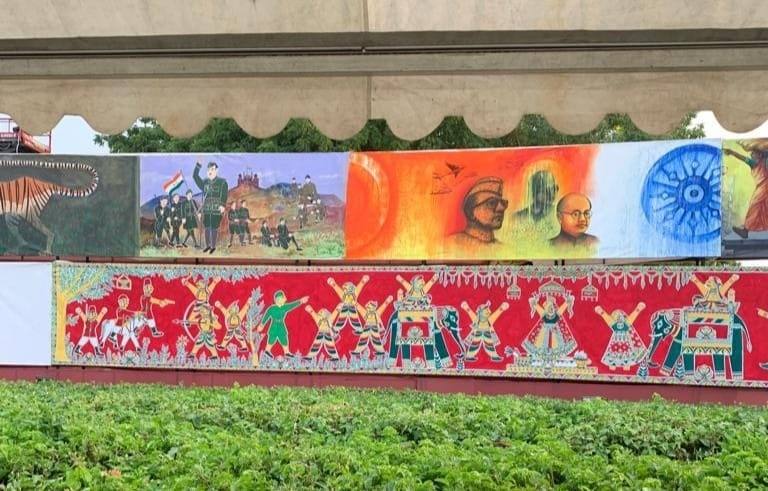
Needs Thrust
Manoj Kumar Pandit received the Bihar Kala Puraskar in 2016, the Vishisht Kala Samman by NABARD in 2007, and the Award for Manjusha by the Department of Art, Culture, and Youth in 2008. He received the moniker ‘Manjusha Guru’ from the Ministry of Culture, Government of India. He also secured the State Award for Manjusha Art in 2012. Manjusha Art is the fourth identity of Bhagalpur city, followed by Katarni Chawal, Jardalu Aam, and Bhagalpuri Silk. Manoj says that despite receiving a GI Tag, Manjusha has yet to be aggressively promoted in the country like other art forms and GI-tagged products. He believes that Bihar Tourism can play a pivotal role in re-branding Manjusha to newer heights and revolutionising the revival of this ancient art in India.
State awardee Manoj Pandit, once ridiculed by the elites for painting scorpions and snakes, is now providing art lessons to more than 800 students under the Kala Sagar Foundation in Bhagalpur. Once neglected with the demeaning tag of art of smaller castes’, Manjusha has now embraced students across all castes, creeds, and communities. Kala Sagar’s objective is to mobilise more youth towards Manjusha art and to create an ecosystem for the economic sustainability of the artists of Bihar.
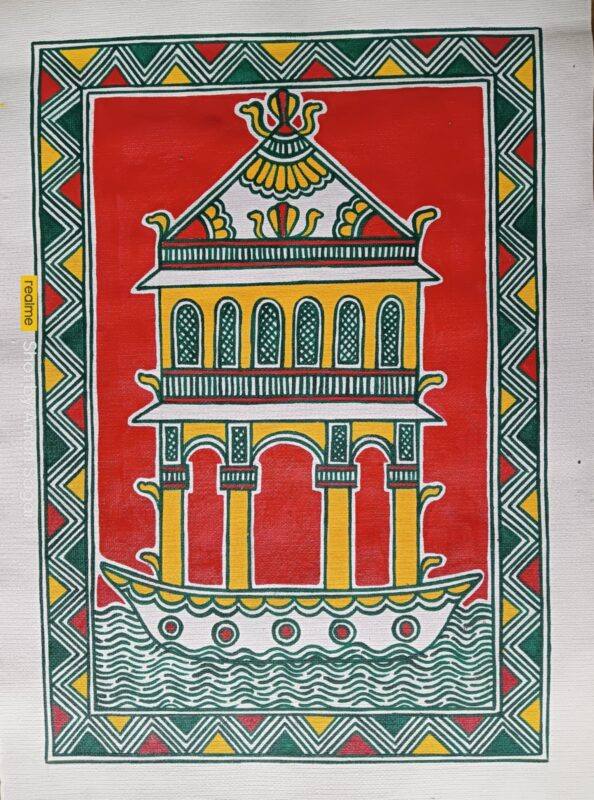
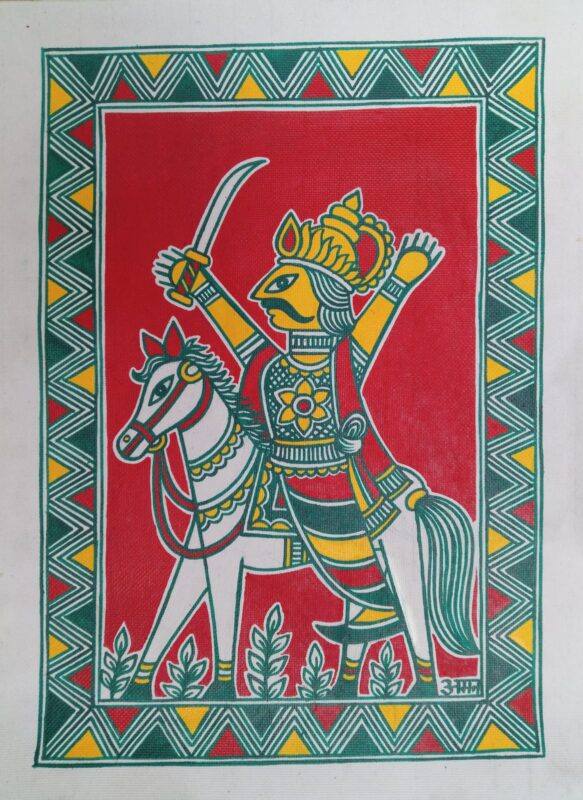

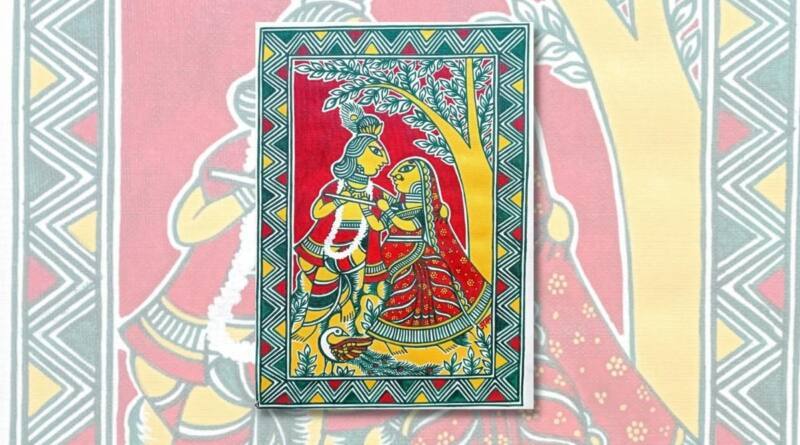


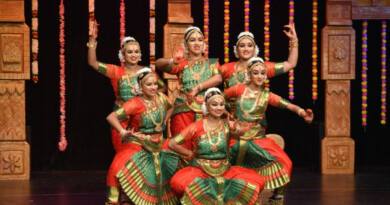
Very informative, interesting and well-written article.
Thank you, Sudha!
I read through this and found value in it.